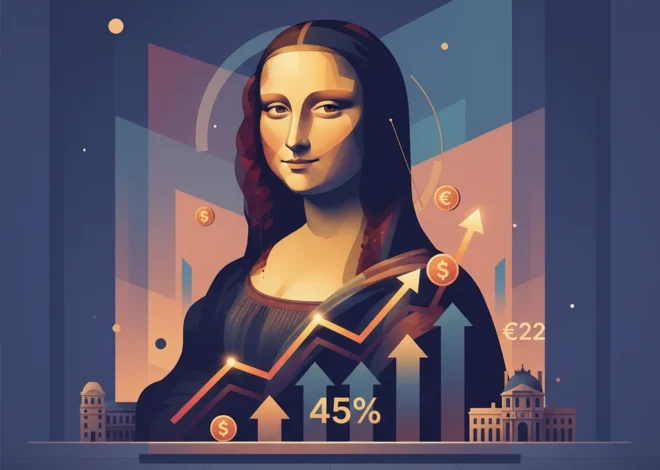
The Ultimate Portfolio: Nicholas Cullinan’s Strategy for Investing in Priceless Cultural Capital
A New Vision for a Legacy Institution
Taking the helm of any globally recognized institution is a monumental task. But when the institution is the British Museum—a 271-year-old titan of culture holding eight million objects—the role transcends typical corporate leadership. It becomes a unique blend of cultural stewardship, complex asset management, and strategic financial planning. For Nicholas Cullinan, the new director, the challenge is not just to preserve the past but to secure its future value for a new generation. This isn’t just about curation; it’s about managing one of the world’s most significant, and arguably priceless, portfolios.
Cullinan, who first visited the museum at the age of four, brings a deeply personal perspective to a role fraught with public and political pressure. His appointment comes at a critical juncture. The museum is grappling with the fallout from significant thefts, navigating heated debates on repatriation, and planning a monumental renovation project. In the world of high-stakes business, this is equivalent to a new CEO inheriting a legacy company with immense brand value but facing simultaneous crises in corporate governance, supply chain ethics, and infrastructure decay. The core question is how to steer this venerable institution through the turbulent waters of the modern global economy, ensuring its relevance and stability for centuries to come.
Asset Allocation: A Director’s Guide to a Diversified Collection
Every seasoned investor knows the importance of understanding the true value within a portfolio, from the blue-chip stocks to the hidden gems. Cullinan’s “secret guide” to the British Museum, as shared with the Financial Times, can be viewed as an expert analysis of his institution’s most compelling assets. He encourages visitors to look beyond the marquee exhibits, much like a savvy analyst looks beyond the headline figures on a balance sheet to find underlying strengths.
His tour begins not with the Rosetta Stone, but with the Assyrian lion-hunt reliefs from the 7th century BC. He describes the “extraordinary combination of brutality and beauty” in these carvings, highlighting their narrative power. In investment terms, these are the foundational, high-value assets whose stories provide the bedrock of the entire collection. They represent the long-term, stable holdings that define the portfolio’s character.
Cullinan also points to the often-overlooked Prints and Drawings department, home to masterpieces by Leonardo da Vinci, Michelangelo, and Raphael. He calls it “one of the greatest collections of works on paper in the world,” yet it remains a relatively hidden asset, accessible only by appointment. This is the museum’s equivalent of an undervalued stock with immense potential. Unlocking the value of such assets—perhaps through enhanced digitalization or curated exhibitions—is a key strategic challenge, similar to how a company might spin off or highlight a high-growth division that was previously buried within its corporate structure. Good leadership requires not just managing known assets, but identifying and elevating those with untapped potential.
To better understand the strategic value of Cullinan’s selections, we can map them to modern investment principles:
| Cullinan’s Highlighted Asset | Description & Significance | Portfolio Management Analogy |
|---|---|---|
| Assyrian Lion-Hunt Reliefs | Ancient, narrative-rich carvings depicting royal power and artistry. A cornerstone of the museum’s collection. | Blue-Chip Stock: A foundational, high-value asset with a long history of performance and brand recognition that anchors the portfolio. |
| Leonardo da Vinci Drawings | Rare, priceless works on paper held in the Prints and Drawings department, accessible primarily to scholars. | Undervalued Asset/Private Equity: An asset with immense intrinsic value not fully reflected in its public visibility. Requires strategic effort to unlock its full potential for a wider audience. |
| The Parthenon Marbles | Globally famous sculptures at the center of geopolitical and cultural debate. A high-profile, high-risk, high-reward holding. | Volatile High-Yield Asset: An asset that generates enormous public interest (yield) but carries significant reputational and geopolitical risk that must be actively managed. |
| The Sutton Hoo Helmet | An iconic Anglo-Saxon artifact representing a pivotal moment in British history. | Growth Stock: An asset representing a key growth narrative (the birth of a nation) that continues to capture the public imagination and drive engagement. |
Risk, Governance, and the Economics of Trust
No institution, whether in banking or culture, can thrive without robust governance and risk management. The British Museum has faced a severe test in this regard. The revelation that an estimated 2,000 items were stolen, with many sold on eBay, was a catastrophic failure of internal controls. For an institution whose currency is trust, this was the equivalent of a major bank revealing a massive internal fraud. It erodes public confidence and raises critical questions about security and oversight.
Cullinan’s task is to rebuild that trust, a process that any corporate leader in crisis would recognize. It requires transparency, accountability, and a complete overhaul of security systems. This involves not just physical security but digital a—a robust inventory system is the first line of defense against loss. This is where modern principles of asset tracking and verification, honed in the world of logistics and fintech, become directly applicable.
Simultaneously, the museum is at the epicenter of the global debate on repatriation, particularly concerning the Parthenon Marbles. This is not merely a curatorial issue; it is a complex challenge in stakeholder management with profound geopolitical and economic dimensions. From a business perspective, this is an ESG (Environmental, Social, and Governance) dilemma. How does a global institution balance its stated mission of being a “museum for the world” with the legitimate claims of nations of origin? Resolving this requires delicate diplomacy and strategic foresight, as the outcome will impact international relations, cultural partnerships, and the museum’s brand for decades to come. The “ownership” of these assets is as complex as the ownership structure of a multinational corporation with a history of acquisitions and mergers. (source)
The Masterplan: A Capital Investment in the Future
Beyond the immediate crises, Cullinan must oversee the museum’s masterplan for renovation—the largest such project in its history. The institution’s infrastructure is aging, with Cullinan noting that “over a third of the galleries are closed” due to necessary refurbishments. This situation is untenable for a premier global destination. The renovation is a massive capital expenditure project, a long-term investing strategy designed to protect the assets, enhance the visitor experience, and secure the museum’s financial future.
Justifying this level of investment requires a compelling business case. The museum is a powerful engine for the UK economy, driving tourism and bolstering London’s status as a global hub. The renovation is not just about maintenance; it’s about optimizing the museum’s layout to improve visitor flow, leveraging technology for more engaging exhibits, and creating new revenue streams. This strategic overhaul is akin to a company reinvesting its profits into R&D and infrastructure to maintain its competitive edge. The return on this investment won’t be measured in quarterly earnings but in generational impact, cultural enrichment, and sustained global relevance.
Cullinan’s leadership will be defined by his ability to balance these competing demands. He must be a scholar, a diplomat, a showman, and a CEO all at once. His “secret guide” is more than a list of personal favorites; it’s a glimpse into a strategic vision that recognizes the profound value of the collection and the urgent need to manage it with the rigor and foresight of a world-class financial institution. The future of the British Museum depends on this delicate synthesis of cultural passion and disciplined, strategic investing in its own legacy.


